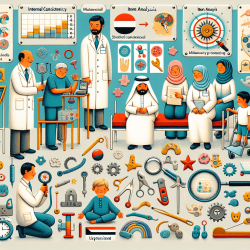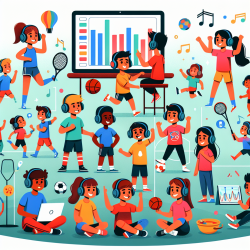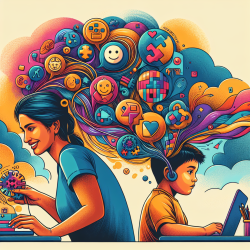As speech-language pathologists (SLPs), we strive to provide inclusive education to support students with diverse abilities. The recent research article, "Engaging Clinicians and Graduate Students in the Design and Evaluation of Educational Resources About Universal Design for Learning," offers valuable insights into creating effective educational resources for SLPs. This blog will summarize key findings from the study and provide actionable steps for practitioners to enhance their skills in Universal Design for Learning (UDL).
Key Findings from the Research
The research, conducted by Tomas et al. (2021), focused on developing educational resources about UDL for speech-language pathology graduate students. The researchers utilized the Analysis, Design, Development, Implementation, and Evaluation (ADDIE) instructional design model and Diffusion of Innovations (DOI) theory. Here are the main outcomes:
- Resource Development: The study used the first three phases of ADDIE (Analysis, Design, Development) to create educational materials, including a PowerPoint presentation, case studies, and UDL strategy handouts tailored for SLPs.
- Stakeholder Engagement: Practicing school SLPs were involved in the resource development process, providing practical insights and feedback to ensure the materials were relevant and applicable.
- Pilot Implementation: The resources were tested with 19 speech-language pathology students, and the feasibility and perceived knowledge change were assessed through pre- and post-questionnaires.
- Positive Outcomes: Preliminary findings indicated that students found the resources practical and acceptable, with a significant improvement in their perceived knowledge of UDL.
Implementing UDL in Your Practice
Based on the research findings, here are some actionable steps to enhance your practice using UDL principles:
- Engage with UDL Resources: Utilize the PowerPoint presentations, case studies, and UDL strategy handouts developed in the study. These materials are designed to be practical and relevant for SLPs.
- Collaborate with Educators: Work closely with teachers and other school staff to implement UDL strategies in the classroom. Collaboration ensures that all students receive the necessary support.
- Trial and Observe: Apply UDL principles in your sessions and observe the outcomes. Use the feedback to refine your approach and make data-driven decisions.
- Continuous Learning: Stay updated with the latest research and best practices in UDL. Engage in professional development opportunities to enhance your knowledge and skills.
Encouraging Further Research
While the study by Tomas et al. provides a solid foundation, further research is needed to evaluate the long-term impact of UDL on student outcomes. Practitioners are encouraged to participate in ongoing research and contribute to the evidence base.
To read the original research paper, please follow this link: Engaging Clinicians and Graduate Students in the Design and Evaluation of Educational Resources About Universal Design for Learning.










